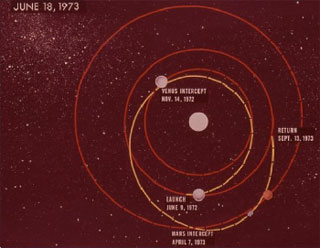Course Description
This course covers the fundamentals of astrodynamics, focusing on the two-body orbital initial-value and boundary-value problems with applications to space vehicle navigation and guidance for lunar and planetary missions, including both powered flight and midcourse maneuvers. Other topics include celestial mechanics, …
This course covers the fundamentals of astrodynamics, focusing on the two-body orbital initial-value and boundary-value problems with applications to space vehicle navigation and guidance for lunar and planetary missions, including both powered flight and midcourse maneuvers. Other topics include celestial mechanics, Kepler’s problem, Lambert’s problem, orbit determination, multi-body methods, mission planning, and recursive algorithms for space navigation. Selected applications from the Apollo, Space Shuttle, and Mars exploration programs are also discussed.
Course Info
Instructor
Departments
Learning Resource Types
notes
Lecture Notes
assignment
Problem Sets
Problem Set Solutions

The first realistic multiple flyby orbit, discovered January 26, 1961 using trial and error. (Image courtesy of Richard Battin.)










